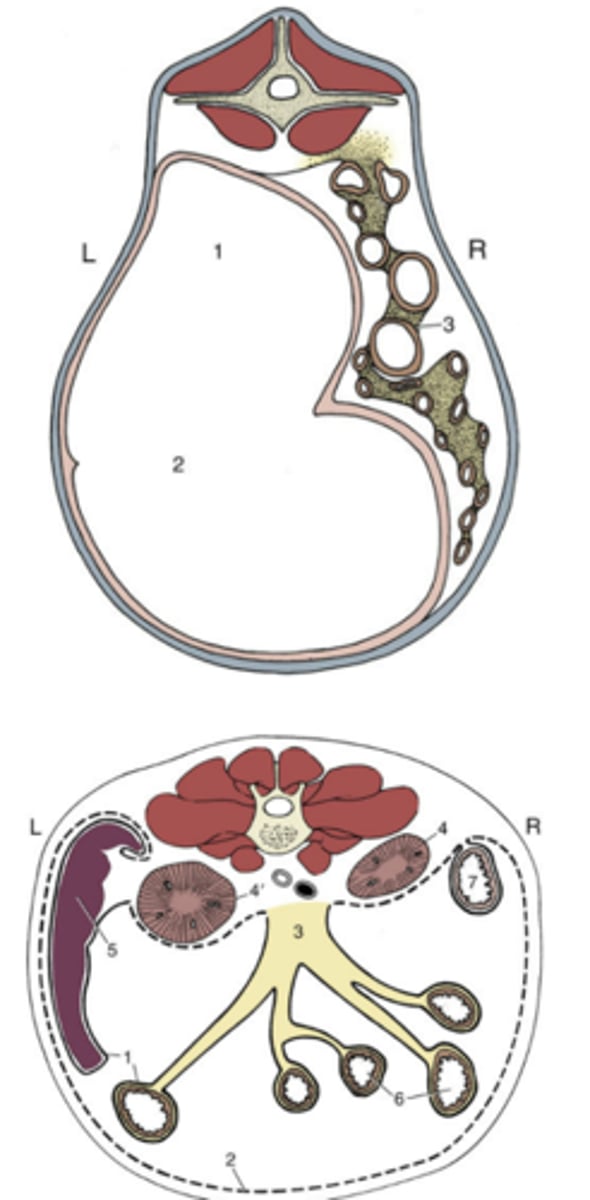Gastrointestinal System- Salivary Glands, Esophagus, & Peritoneal Cavity
1/16
There's no tags or description
Looks like no tags are added yet.
Name | Mastery | Learn | Test | Matching | Spaced |
|---|
No study sessions yet.
17 Terms
Salivary Glands
- Small ones are found in the structures within the mouth and produce mucous
- Larger glands are found outside of the mouth and produce a more serous fluid
- Contain digestive enzymes to start the digestion process ASAP
- Parotid
- Zygomatic
- Mandibular
- Sublingual
- Saliva keeps the mouth moist, clean, and facilitates mastication via lubrication
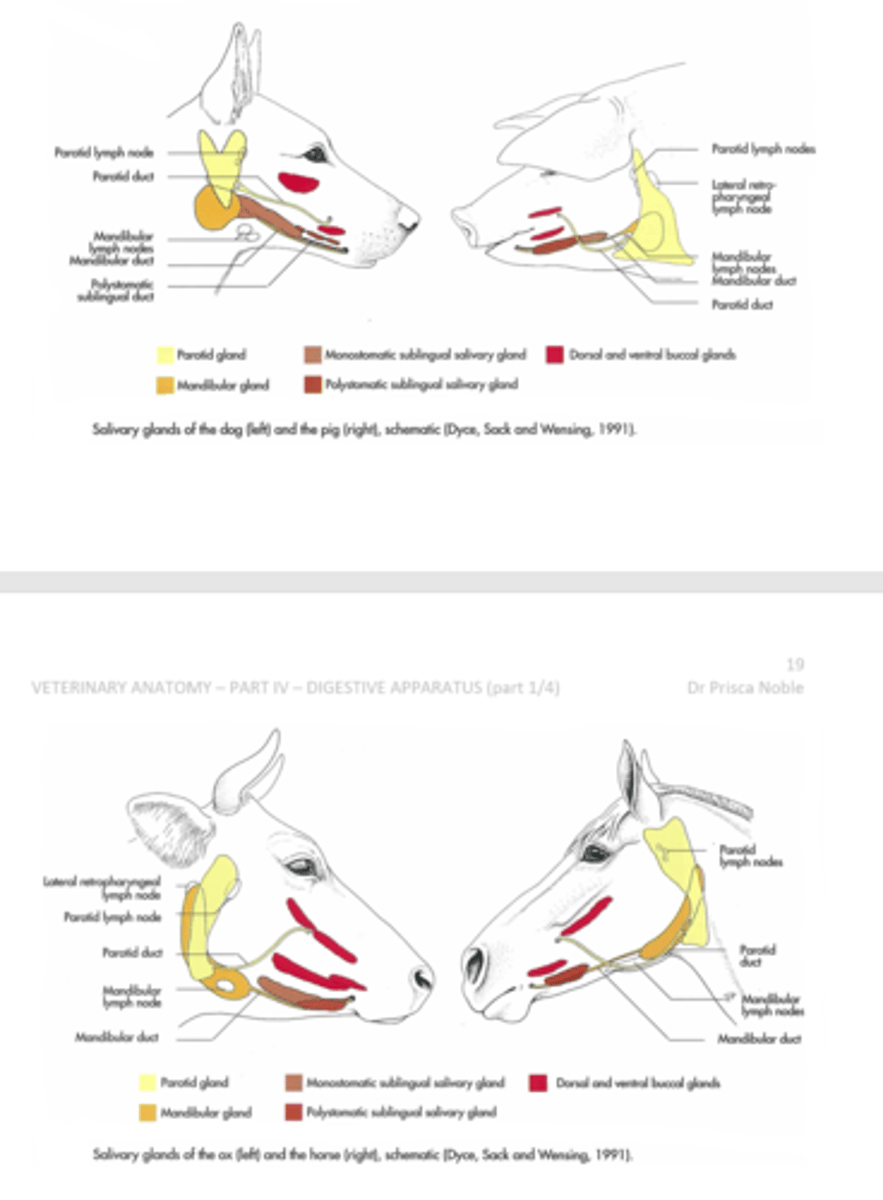
Parotid Gland (1)
- Produces mostly serous(watery) saliva
- Ventral to the ear
- Larger in herbivores
- Very productive gland
- Enters along the caudolateral side of the mouth
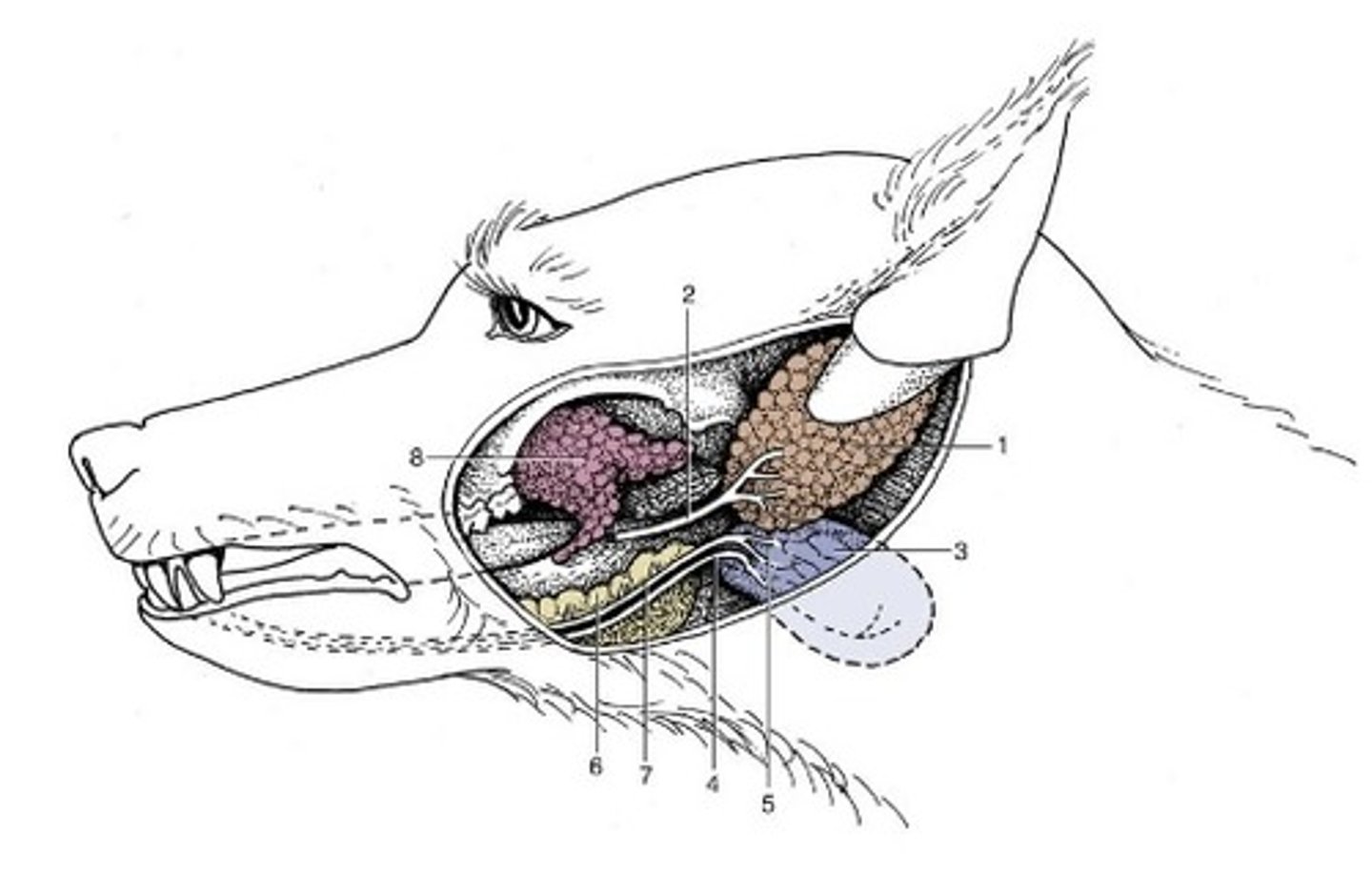
Zygomatic Gland (8)
- Ventral to the zygomatic arch & orbit
- "Dorsal Buccal Gland" in herbivores
- Mixed secretions
- Opens on the dorsolateral portion of the mouth, near the first molar
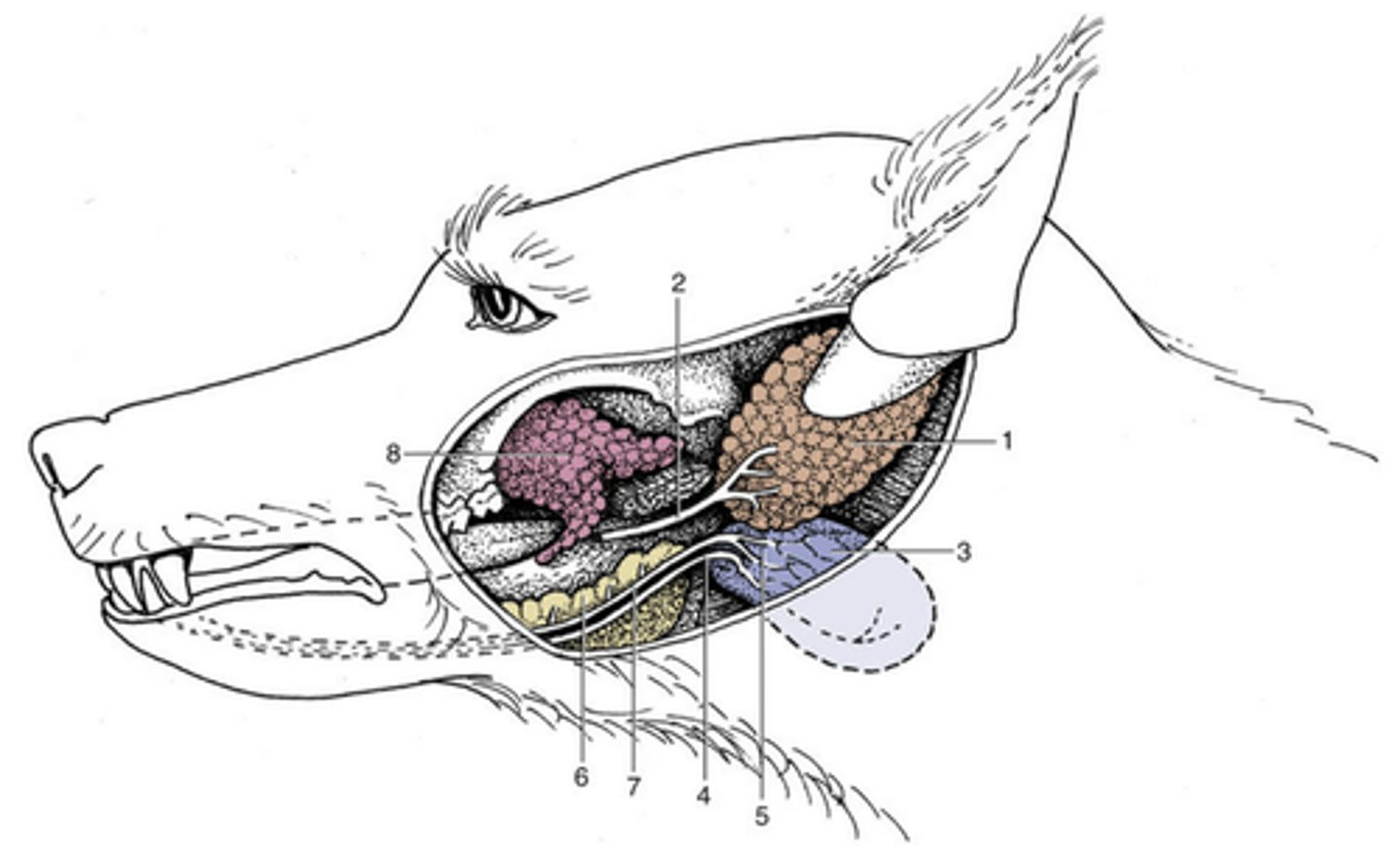
Mandibular Gland (3)
- Mixed mucous and serous saliva
- Smaller than the parotid gland
- Close to the angle of the jaw
- Larger in herbivores
- Opens into the floor of the mouth
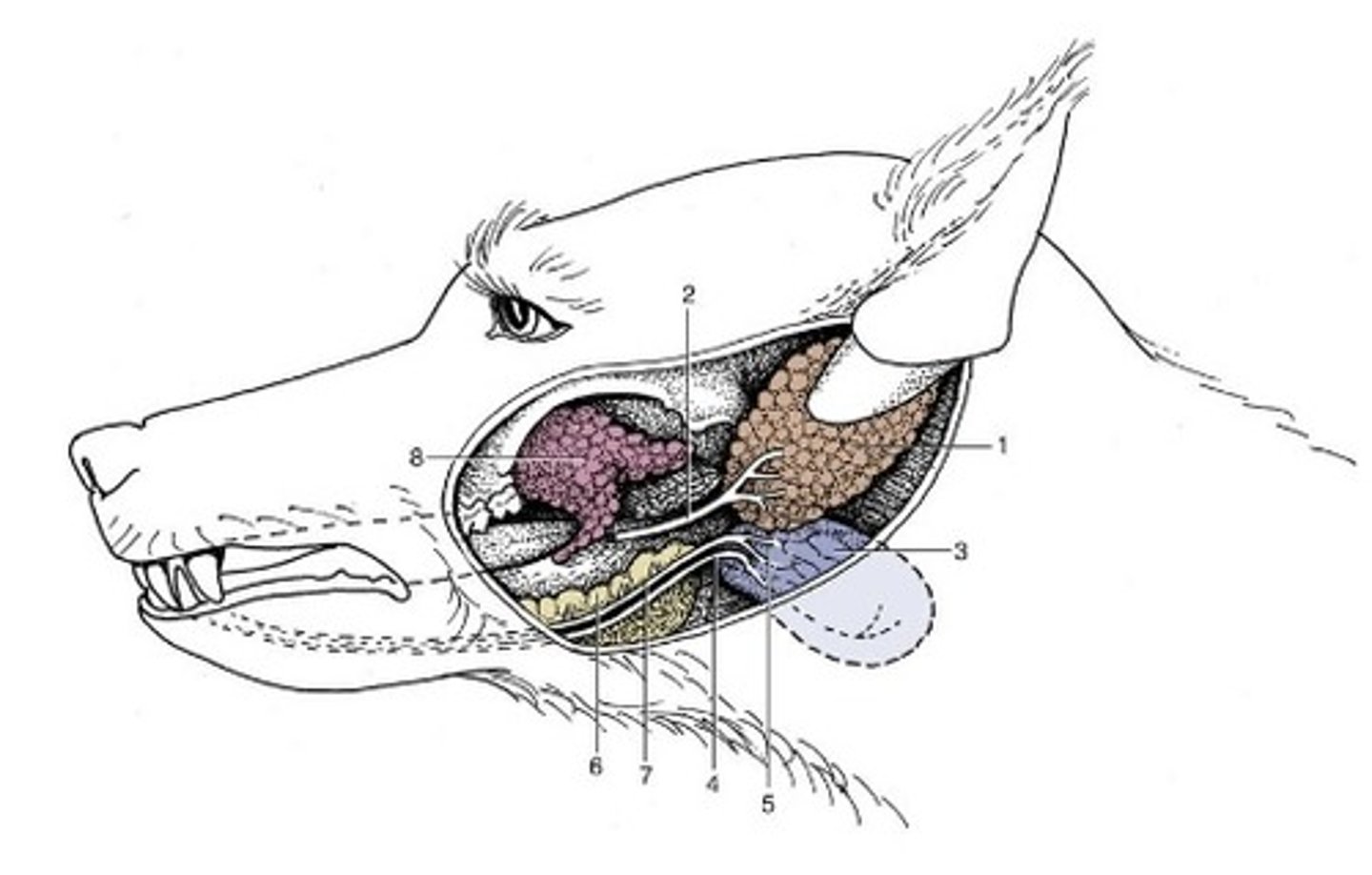
Sublingual Gland (6/7)
- Mixed mucous and serous secretions
- Rostral to the mandibular gland, caudoventral to the root of the tongue
- May have several parts to it
- Opens on the floor of the mouth, below the tongue
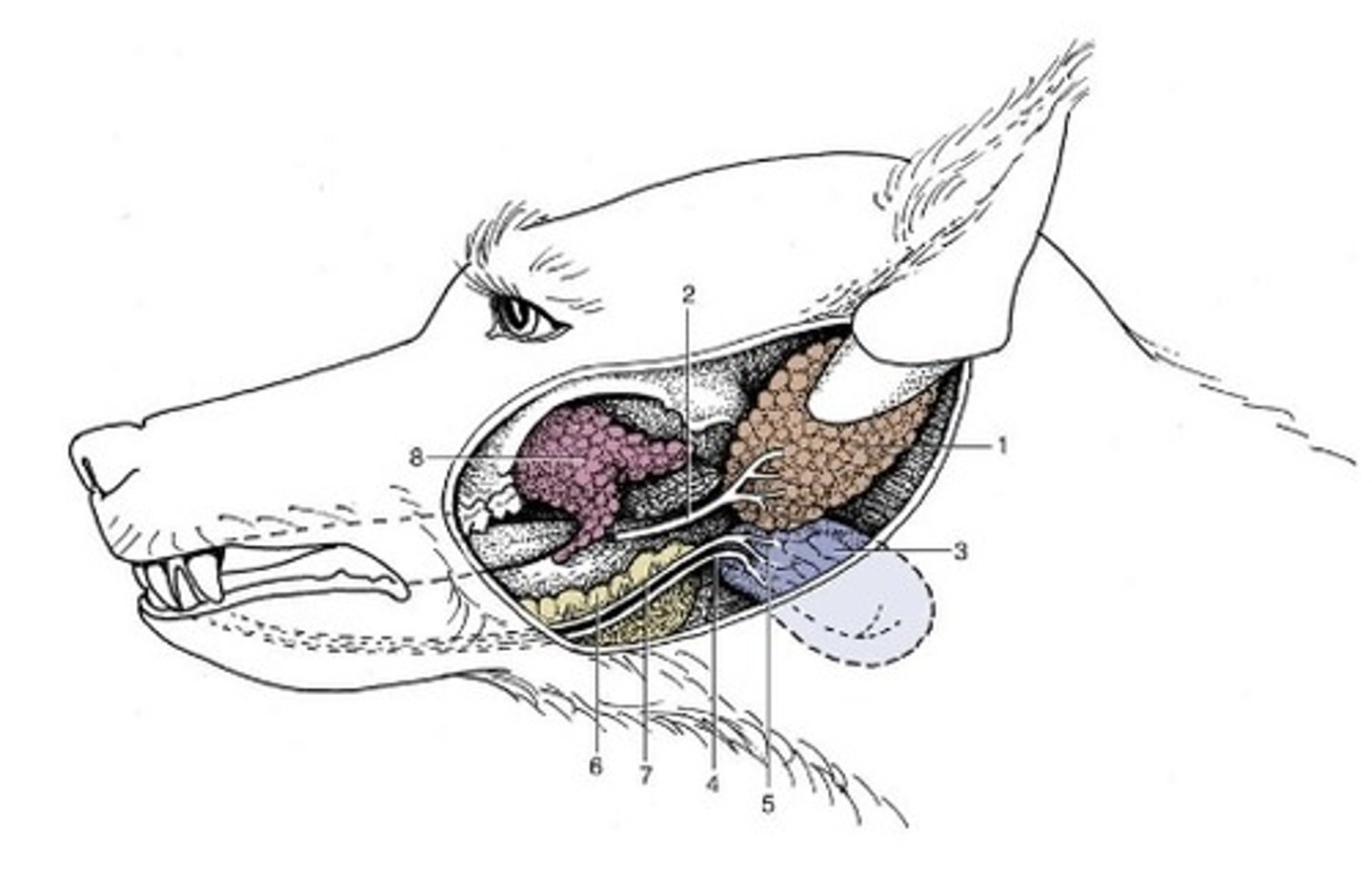
Soft Palate
- Separates the dorsal nasopharynx from the ventral oropharynx
- Soft tissue only - no bone
- Continuation of the hard palate
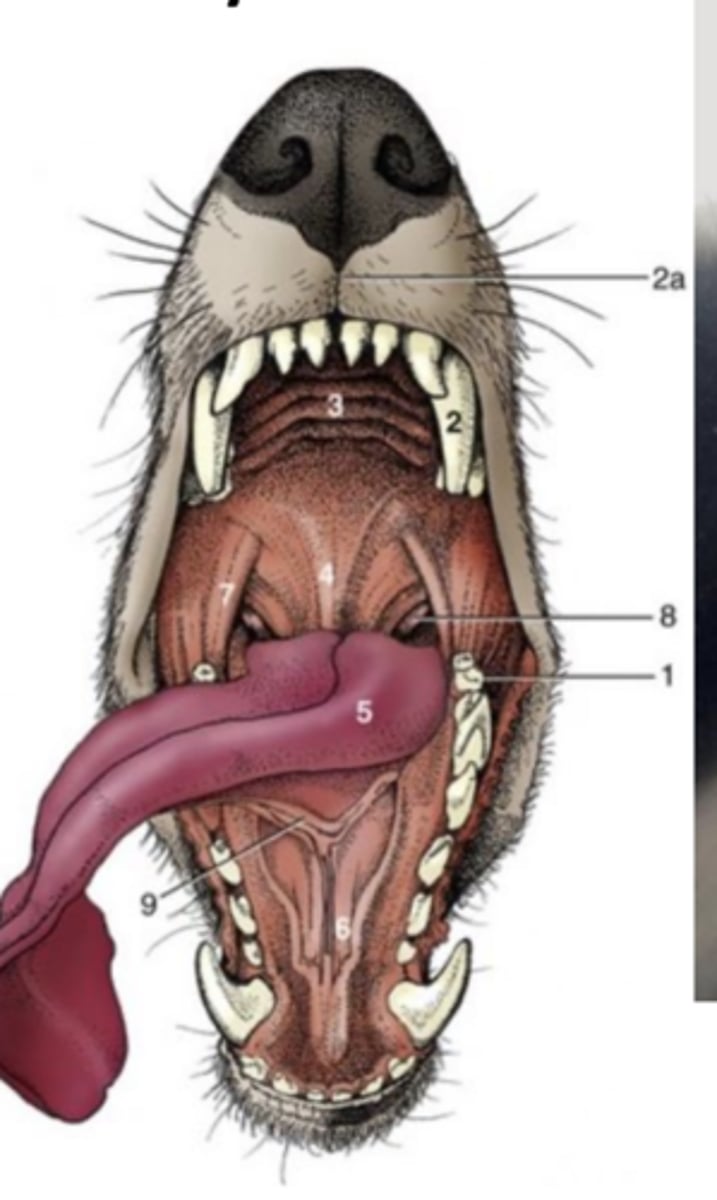
Pharynx
- Oropharynx and nasopharynx
- Narrowness of the oropharynx limits the size of what can be swallowed
- Where the GI tract & respiratory tract begin to cross over
- Pharynx is the general space caudal to the oral/nasal cavities and rostral to the trachea/esophagus
- No clear boundaries
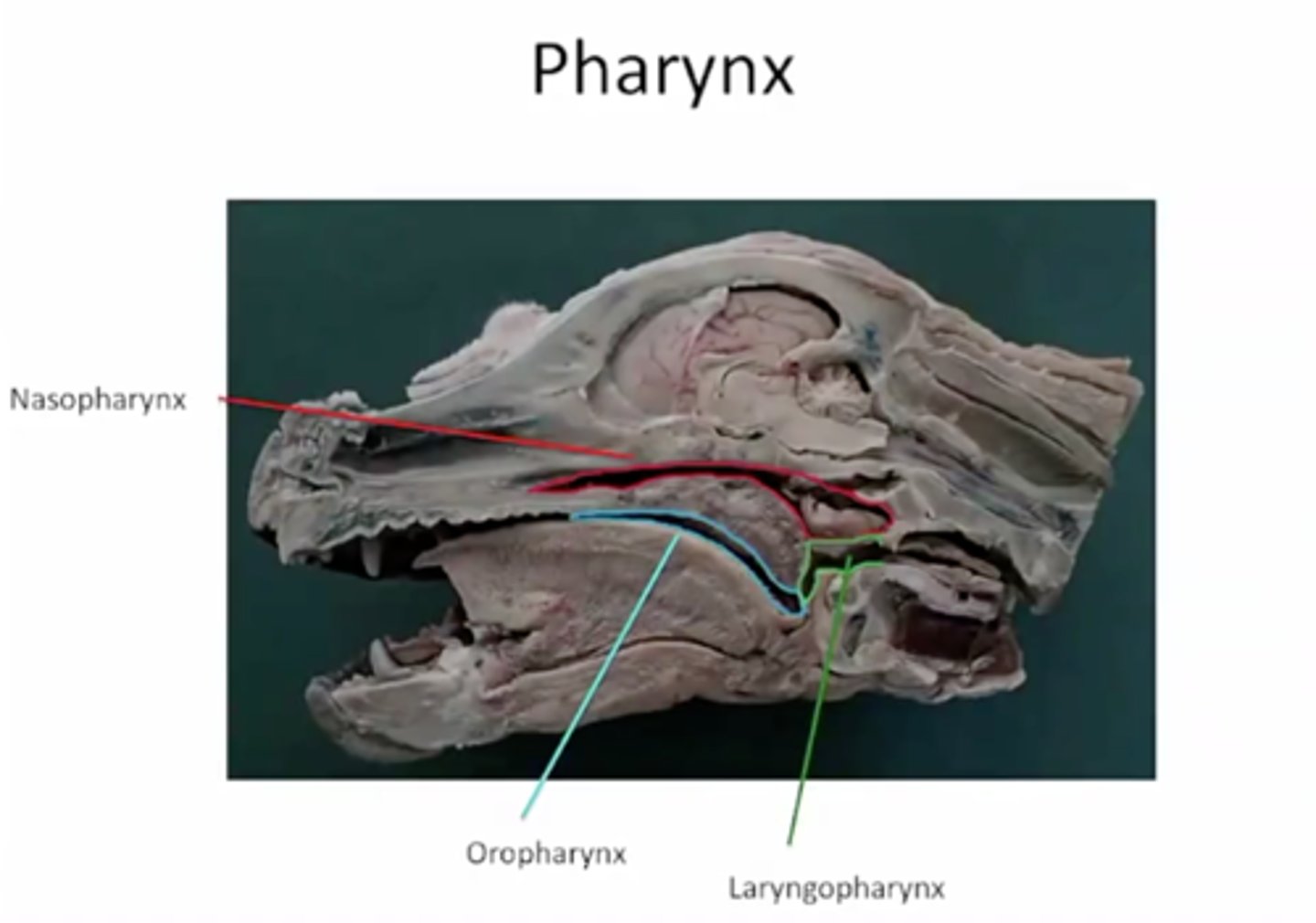
Esophagus
- Brings food from the pharynx to the stomach
- Dorsal/slightly left-of-dorsal compared to the trachea
- Runs within the mediastinum (midline)of the thorax & goes through the diaphragm into the abdomen
- Esophageal hiatus
- Travels dorsally over the liver before entering the stomach at the cardia
Espophagus
- Outer connective tissue (serosal)layer (7)
- Middle muscular layer (actually two layers that run in different directions) (6/6')
- Inner mucosal layer
- 3 layers: inner mucosa (1), middle muscular (3) layer, & outer submucosa(4/5)

Esophagus
- Striated muscle cranially, & in many species becomes smooth muscle within the thorax
- Folded in on itself when it does not have ingesta in it
- Collapsed - significant difference from the trachea, which stays patent(always open)
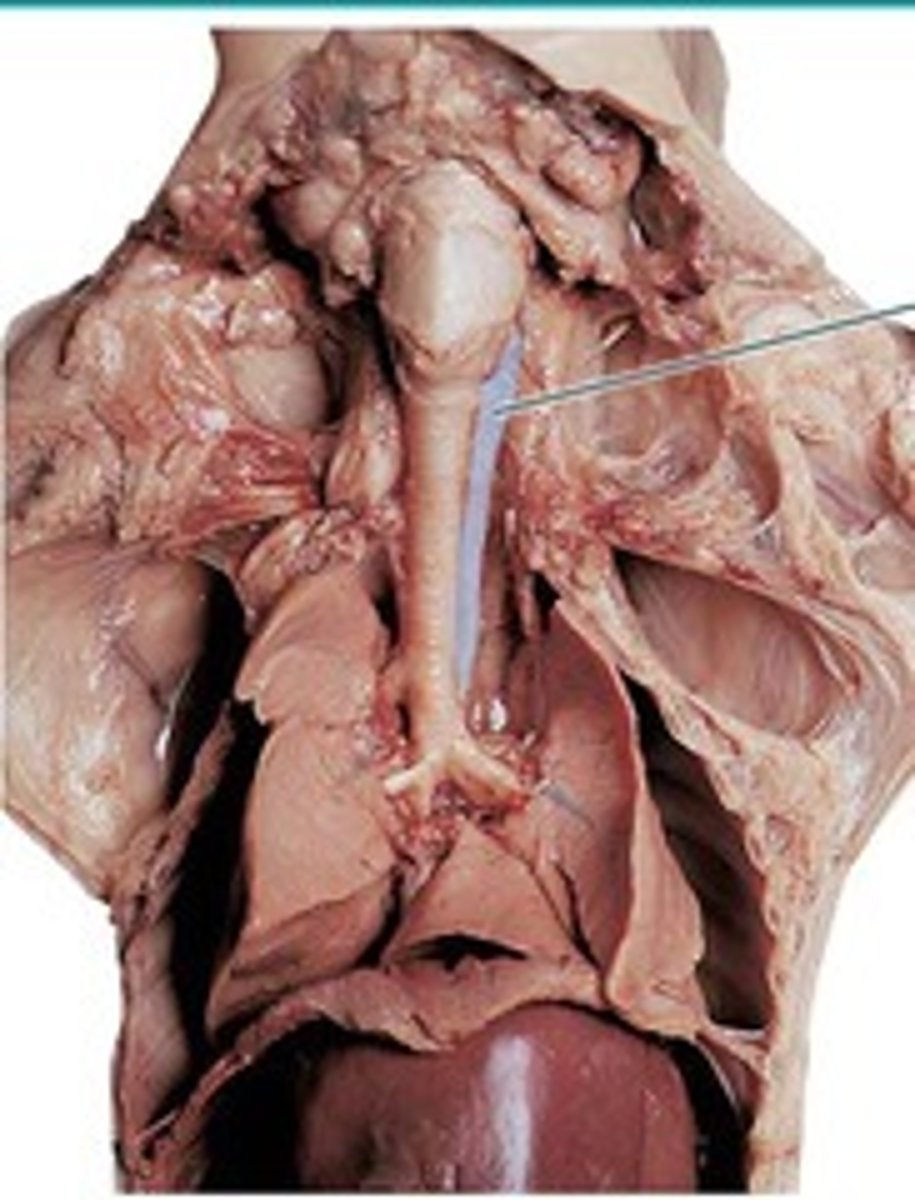
Deglutition
"Swallowing"
Voluntary only while food is in the mouth, then it becomes involuntary
- Food bolus is isolated caudally when the apex of the tongue is pressed against the hard palate
- The tongue then pushes the bolus toward the pharynx
- Once the bolus touches the pharyngeal mucosa, a reflexive motion completes the act of swallowing
- The soft palate is raised, and the epiglottis tilts back to cover the glottis (entrance to the trachea)
- Peristalsis (rhythmic contraction of esophageal muscles) carries the bolus toward the stomach
Abdominal Cavity
- Caudal to the diaphragm (thoracic cavity) and cranial to the pelvic cavity
- Largest body cavity
- Cranially covered by the caudal ribs
- Caudally surrounded by the abdominal muscles
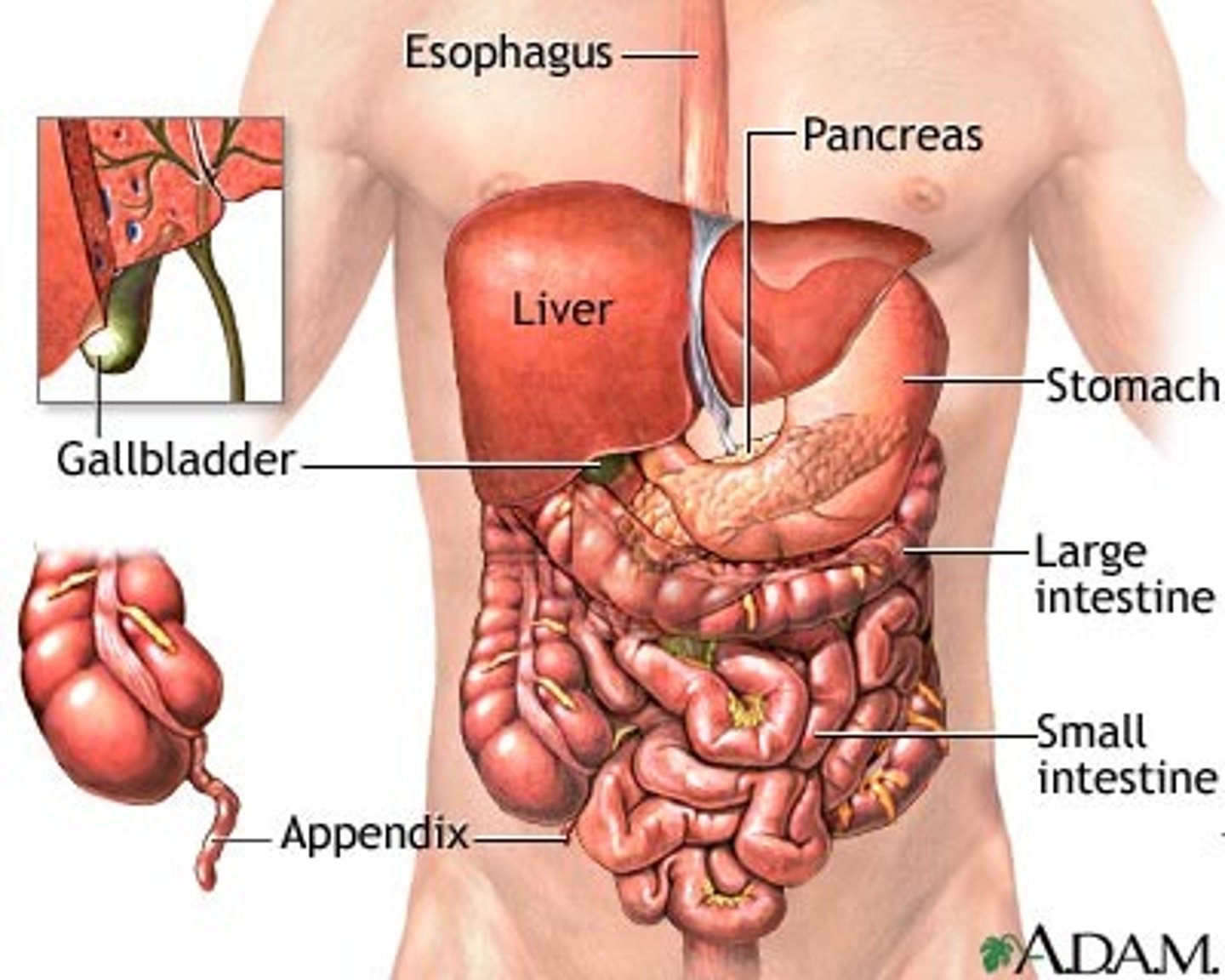
Peritoneal Cavity
- Cavity that is surrounded by a delicate serous membrane (peritoneum)
- None of the organs are actually within the peritoneal cavity, but most abdominal organs are found within the folds of the peritoneum
- Organs within the peritoneal folds =intraperitoneal
- Organs adhered directly to the body wall= retroperitoneal
- Kidneys
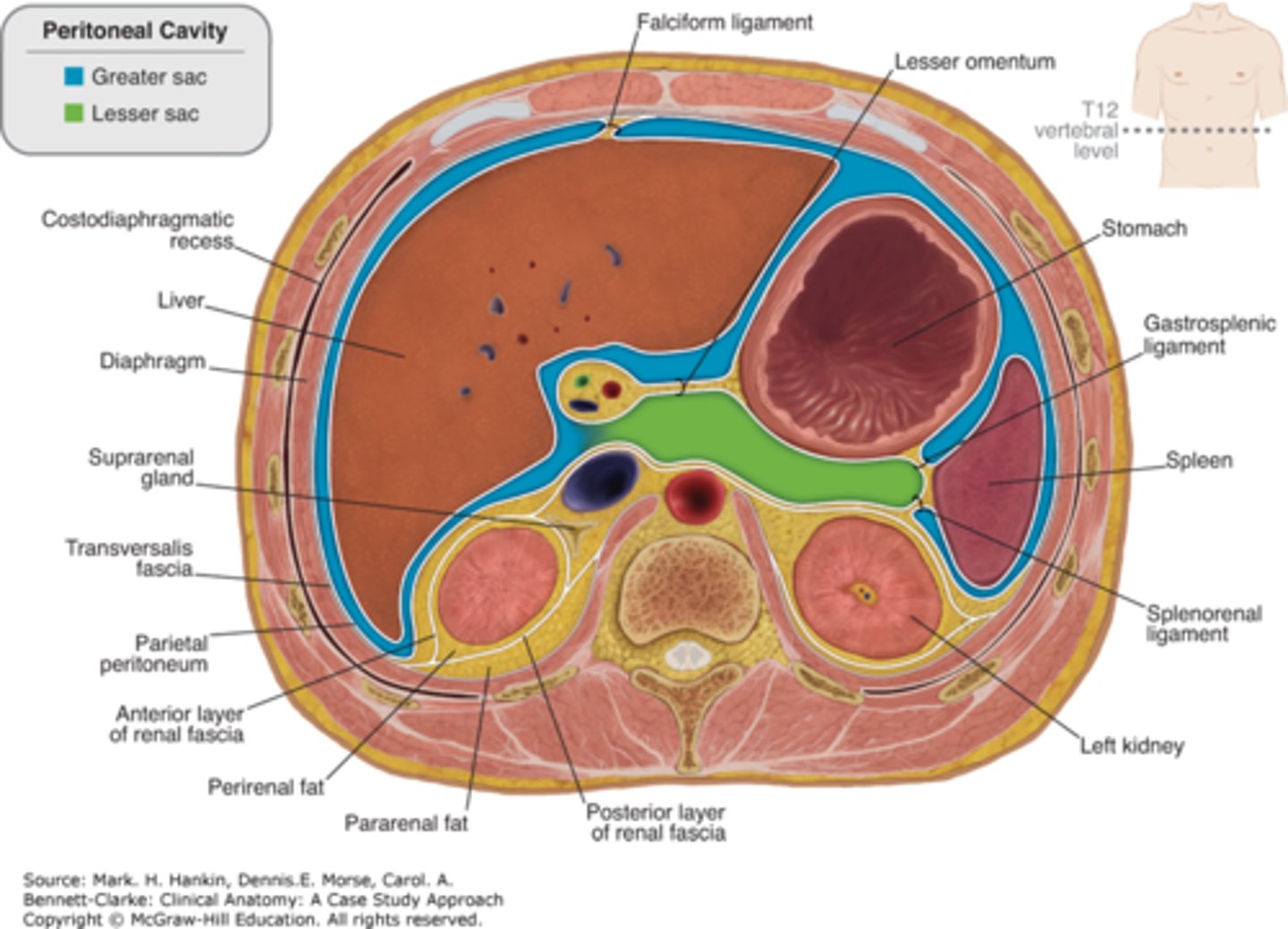
Peritoneum
- Single layer of cells that is connected to viscera by fibroelastic tissue
- Often a lot of fat is stored under the peritoneum, associated with the organs
- Should have very little (but still some!)fluid between the peritoneum and the organs to allow for lubrication
- Visceral peritoneum (solid line) -adhered to the intraperitoneal organs
- Parietal peritoneum (dotted line) -peritoneum associated with the body wall
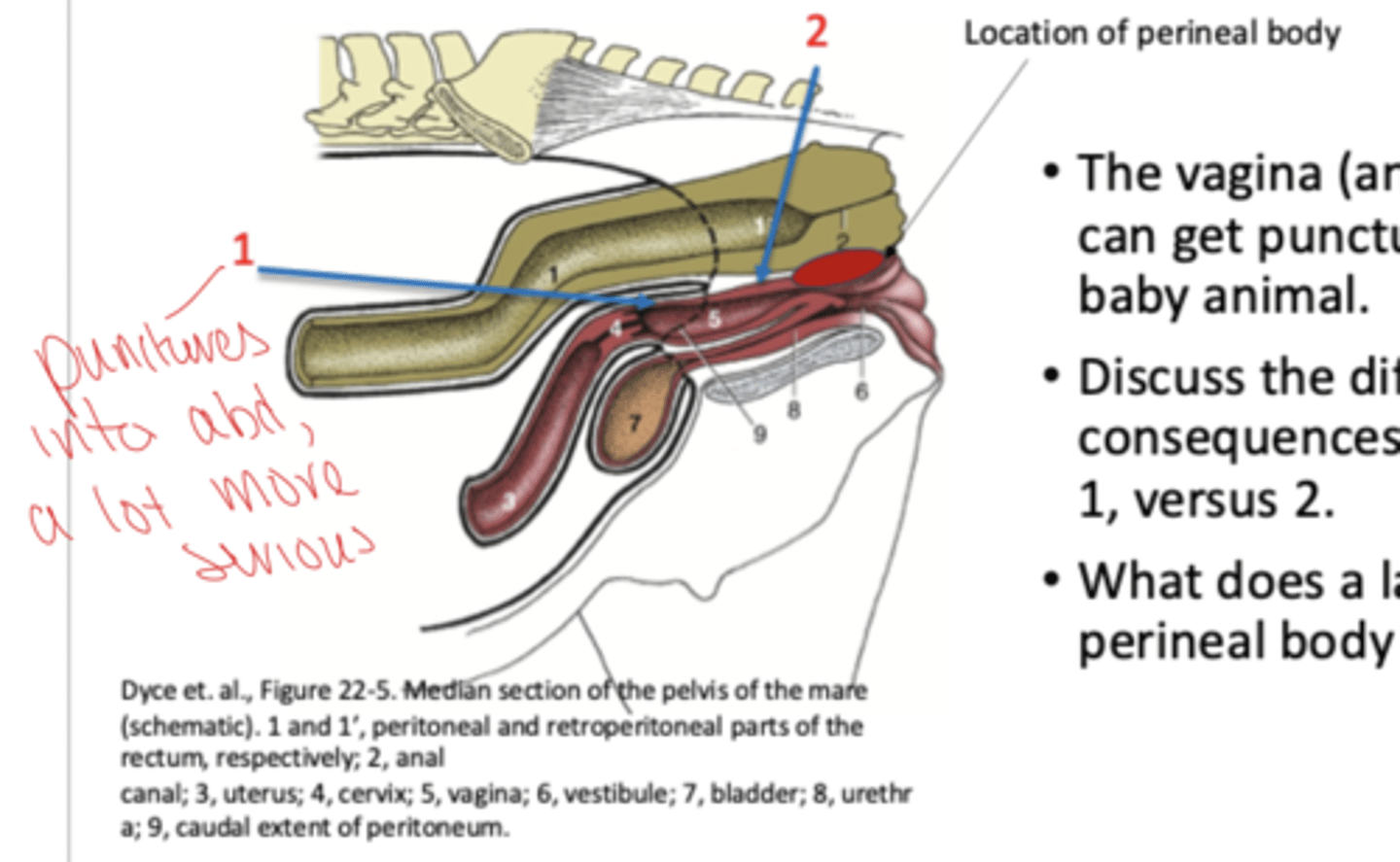
Mesentery
- Double folds of peritoneum that house fat, support viscera, and supply blood to viscera
- Technically "mesentery" refers to the peritoneum that supports the small intestines
- "Mesocolon": supports the colon• "Mesometrium": supports the uterus
- Etc...
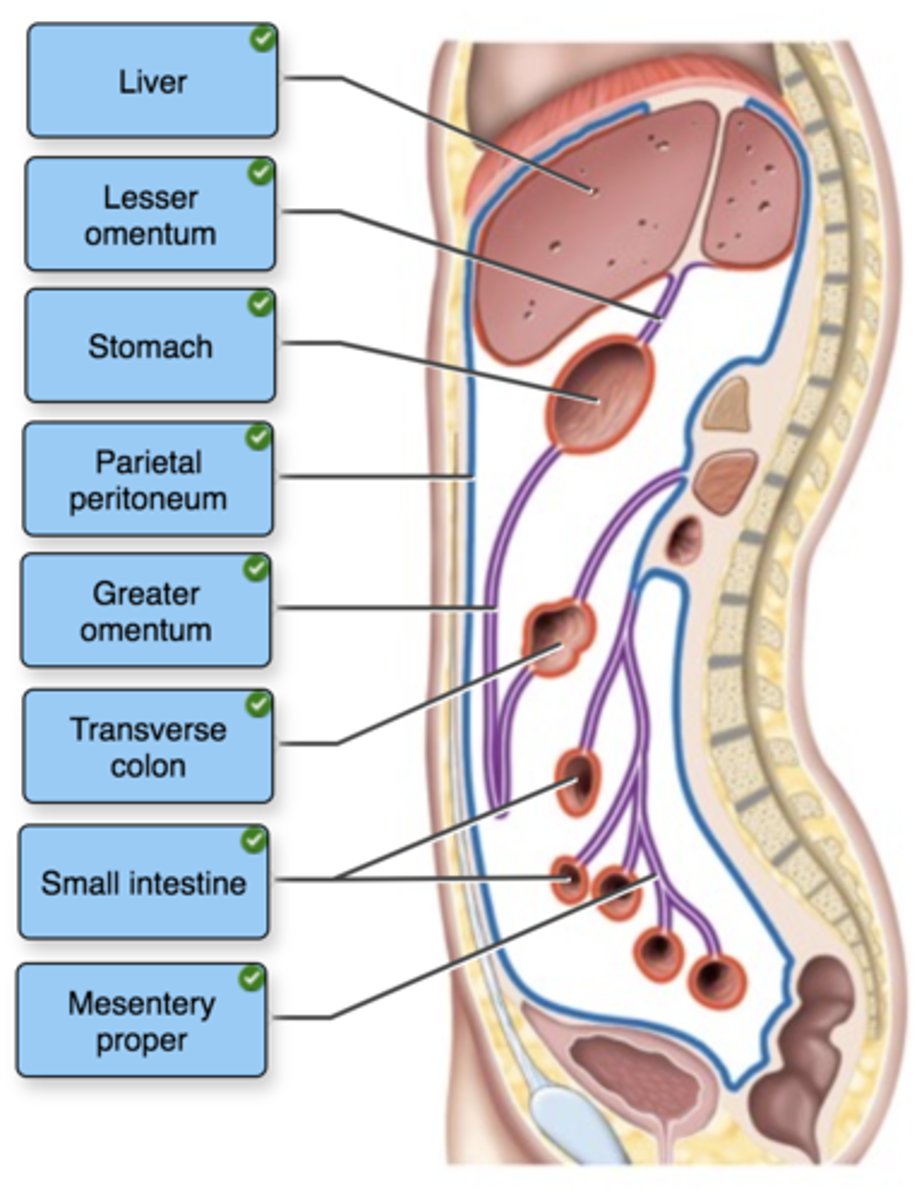
Omentum
- Double folds of peritoneum that supports the stomach
- Greater omentum is attached to the graeter curvature of the stomach
- Significant fat deposition
- Less essential for blood supply, although blood vessels DO run through the omentum
- In small animals: "lacy"
- In large animals: "solid"
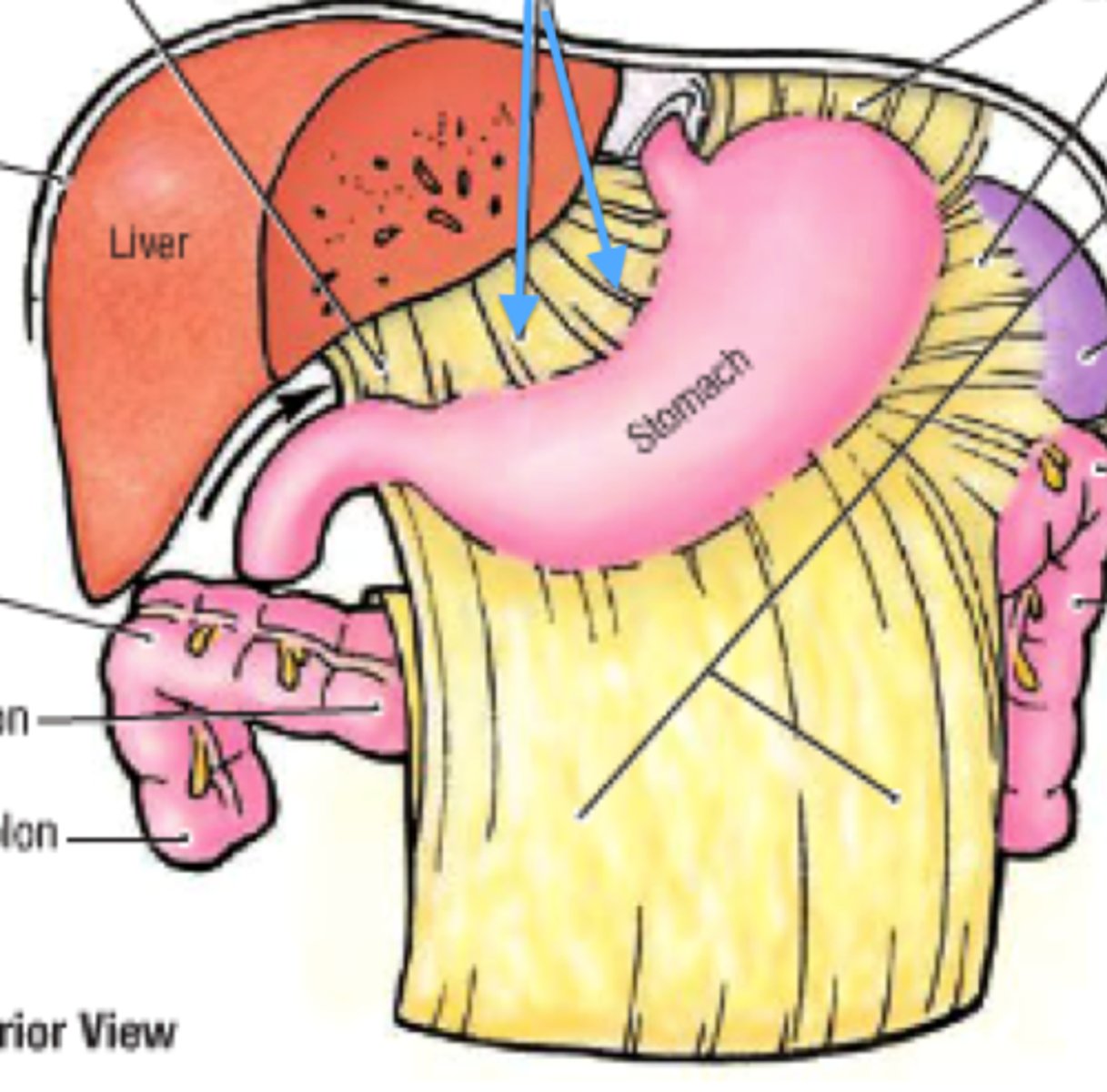
General Visceral Topography
- While certain rules always apply, there may be significant differences between species, or depending on whether they are an adult or juvenile, if they have recently eaten, or if they are pregnant
- "Proximal" refers to "closer to the mouth"
- "Distal" refers to "further from the mouth"
